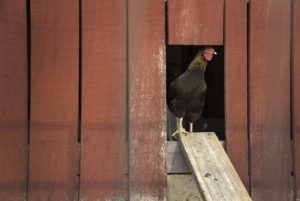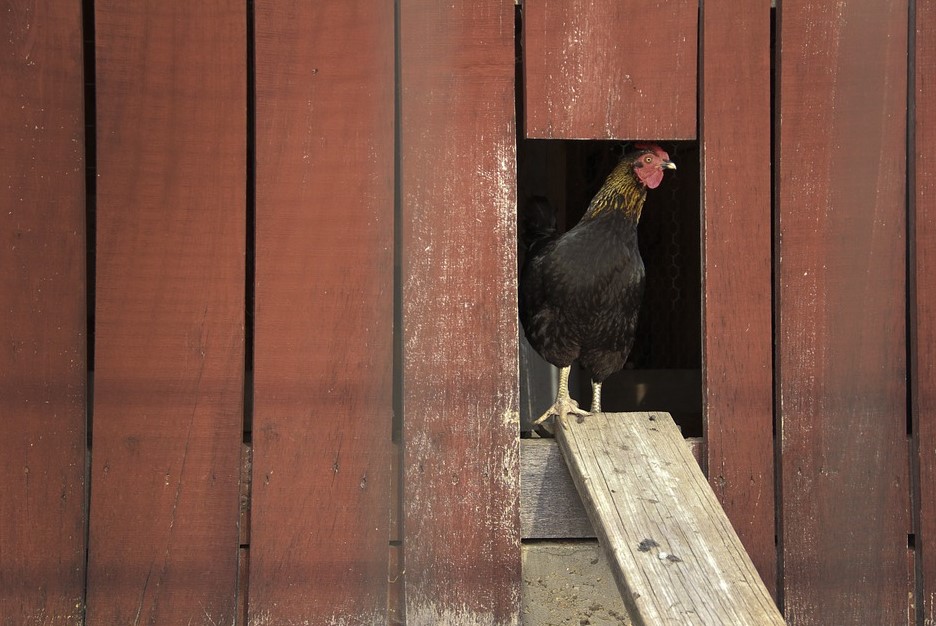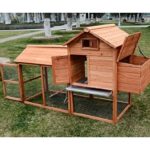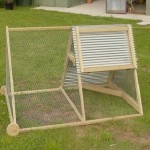In Maslow’s hierarchy of needs, shelter is a most basic physiological requirement. Just like humans, chickens require protection from their environment in order to thrive. Their health, safety, and ability to lay eggs all depend on it.
Ready to break ground on your small-farm chicken coop? Follow this blueprint of basics before you start building.
Chicken Coop Size
Chickens need ample space to spread their wings. Puns aside, flocks that are packed in too tight a space may experience serious health issues. Providing ample area per bird will also help cut down on excessive pecking, aggression, and molting. The more room they have to roam, the happier you’ll both be.
As you kick off the planning phase, start by plotting out how much space you’ll need. For a general guide consider that the birds:
- Usually need some outdoor access. The more outdoor access you can give them, the less inside space they’ll need. As a general rule, if chickens are primarily using the coop to nest at night, ensure each bird has 2 to 4 square feet inside. If you can afford more, all the better.
- Require more indoor space during winter months. If you plan to keep your flock inside almost exclusively, they’ll need about 10 feet of run space per bird.
- May benefit from a tractor. Moveable chicken tractors allow birds to travel to different patches of land under a protective structure. In this case, best to ensure they have at least 5 square feet per chicken.
Again, chickens do best with a little outdoor time and sufficient space to bug hunt in the open air. If you’re an urban homesteader with limited land, best to work backward. Measure the space and be real about how many chickens you can comfortably accommodate before you buy.
Necessity of the Nesting Box
For nighttime nesting, your birds need a box. Whether you build one for each hen or construct one big enough to share, see that there’s one cubic foot for each of them.
If you discover your flock likes to nest together, you’ll want to provide roughly one box for every three birds. Of course, offering them a little extra privacy could increase egg production, so it’s something to consider if you have enough space and resources.
Types and Features of a chicken coop

Now that you know how much space you have and how many chickens you’re trying to house, the next step is to solidify the structure. Different environments will necessitate different types of shelter.
For example, urban or suburban chicken farmers may find a pre-made coop provides the best security and aesthetic. Also, best to double check to see if there are any building or homeowners’ association codes in your area before you take the plunge.
If you’re in a rural area with space to spare, you might look into building a coop. Many structures, like larger dog houses, can be re-purposed fairly easily. Or, you can find easy-to-follow building blueprints online. Materials like discarded wood scraps all the way up to prefabricated panels are fair game when constructing your coop.
Necessities of a chicken coop
Whichever space you settle on, there are some non negotiables you’ll need to include.
- Start by providing your chicks a way to shade themselves from the sun.
- Next, make sure there is proper ventilation. Fresh air is key.
- Your birds will also need an area for dust bathing.
- Finally, prioritize their protection. If not, predators, from wild dogs to raccoons, will be first in line at the buffet.
Regardless of your setting, all flocks need to seek shelter. Meet this basic need, and you’ll be one step closer to raising healthy backyard chickens.







